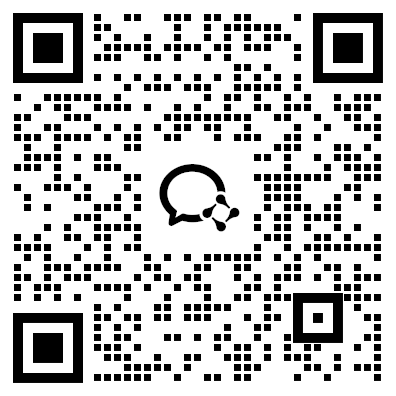

雅思备考规划
扫码添加助教免费咨询雅思备考规划

扫码下载 新东方雅思Pro APP,雅思备考一站式工具
本文为大家带来的是雅思阅读模拟题:How to Spot a Liar,帮助大家备考雅思.
点击查看》》》雅思阅读模拟题汇总【备考必刷】
However much we may abhor it, deception comes naturally to all living things. Birds do it by feigning injury to lead hungry predators away from nesting young. Spider crabs do it by disguise: adorning themselves with strips of kelp and other debris, they pretend to be something they are not – and so escape their enemies. Nature amply rewards successful deceivers by allowing them to survive long enough to mate and reproduce. So it may come as no surprise to learn that human beings- who, according to psychologist Gerald Johnson of the University of South California, or lied to about 200 times a day, roughly one untruth every 5 minutes- often deceive for exactly the same reasons: to save their own skins or to get something they can’t get by other means.
But knowing how to catch deceit can be just as important a survival skill as knowing how to tell a lie and get away with it. A person able to spot falsehood quickly is unlikely to be swindled by an unscrupulous business associate or hoodwinked by a devious spouse. Luckily, nature provides more than enough clues to trap dissemblers in their own tangled webs- if you know where to look. By closely observing facial expressions, body language and tone of voice, practically anyone can recognise the tell-tale signs of lying. Researchers are even programming computers – like those used on Lie Detector -to get at the truth by analysing the same physical cues available to the naked eye and ear. “With the proper training, many people can learn to reliably detect lies,” says Paul Ekman, professor of psychology at the University of California, San Francisco, who has spent the past 15 years studying the secret art of deception.
In order to know what kind of Lies work best, successful liars need to accurately assess other people’s emotional states. Ackman’s research shows that this same emotional intelligence is essential for good lie detectors, too. The emotional state to watch out for is stress, the conflict most liars feel between the truth and what they actually say and do.
Even high-tech lie detectors don’t detect lies as such; they merely detect the physical cues of emotions, which may or may not correspond to what the person being tested is saying. Polygraphs, for instance, measure respiration, heart rate and skin conductivity, which tend to increase when people are nervous – as they usually are when lying. Nervous people typically perspire, and the salts contained in perspiration conduct electricity. That’s why a sudden leap in skin conductivity indicates nervousness -about getting caught, perhaps -which, in turn, suggests that someone is being economical with the truth. On the other hand, it might also mean that the lights in the television Studio are too hot- which is one reason polygraph tests are inadmissible in court. “Good lie detectors don’t rely on a single thing” says Ekma, but interpret clusters of verbal and non-verbal clues that suggest someone might be lying.”
The clues are written all over the face. Because the musculature of the face is directly connected to the areas of the brain that process emotion, the countenance can be a window to the soul. Neurological studies even suggest that genuine emotions travel different pathways through the brain than insincere ones. If a patient paralyzed by stroke on one side of the face, for example, is asked to smile deliberately, only the mobile side of the mouth is raised. But tell that same person a funny joke, and the patient breaks into a full and spontaneous smile. Very few people -most notably, actors and politicians- are able to consciously control all of their facial expressions. Lies can often be caught when the liar's true feelings briefly leak through the mask of deception. We don’t think before we feel, Ekman says. “Expressions tend to show up on the face before we’re even conscious of experiencing an emotion.”
One of the most difficult facial expressions to fake- or conceal, if it’s genuinely felt - is sadness. When someone is truly sad, the forehead wrinkles with grief and the inner corners of the eyebrows are pulled up. Fewer than 15% of the people Ekman tested were able to produce this eyebrow movement voluntarily. By contrast, the lowering of the eyebrows associated with an angry scowl can be replicated at will but almost everybody. “If someone claims they are sad and the inner corners of their eyebrows don’t go up, Ekmam says, the sadness is probably false.”
The smile, on the other hand, is one of the easiest facial expressions to counterfeit. It takes just two muscles -the zygomaticus major muscles that extend from the cheekbones to the corners of the lips- to produce a grin. But there’s a catch. A genuine smile affects not only the corners of the lips but also the orbicularis oculi, the muscle around the eye that produces the distinctive “crow’s feet” associated with people who laugh a lot. A counterfeit grin can be unmasked if the corners of the lips go up, the eyes crinkle, but the inner corners of the eyebrows are not lowered, a movement controlled by the orbicularis oculi that is difficult to fake. The absence of lowered eyebrows is one reason why the smile looks so strained and stiff.
Questions 14-18
Do the following statements agree with the claims of the writer in Reading Passage? In boxes 14-18 on your answer sheet, write
YES - if the statement agrees with the information
NO - if the statement contradicts the information
NOT GIVEN - if there is no information on this
14 .................. All living animals can lie.
15 .................. Some people tell lies for self-preservation.
16 .................. Scientists have used computers to analyze which part of the brain is responsible for telling lies.
17 .................. Lying as a survival skill is more important than detecting a lie.
18 .................. To be a good liar, one has to understand other people's emotions.
Questions 19-22
Choose the correct letter A, B, C or D. Write your answers in boxes 19-22.
19 How does the lie detector work?
A It detects whether one's emotional state is stable.
B It detects one’s brain activity level.
C It detects body behaviour during one's verbal response.
D It analyses one's verbal response word by word.
20 Lie detectors can't be used as evidence in a court of law because
A Lights often cause lie detectors to malfunction.
B They are based on too many verbal and non-verbal clues.
C Polygraph tests are often inaccurate.
D There may be many causes of certain body behaviour.
21 Why does the author mention the paralyzed patients?
A To demonstrate how a paralyzed patient smiles
B To show the relation between true emotions and body behaviour
C To examine how they were paralyzed
D To show the importance of happiness from recovery
22 The author uses politicians to exemplify that they can
A Have emotions.
B Imitate actors.
C Detect other people's lives.
D Mask their true feelings.
Questions 23-26
Classify the following facial traits as referring to
A sadness
B anger
C happiness
Write the correct letter A, B or C in boxes 23-26.
23 .................. Inner corners of eyebrows raised
24 ..................The whole eyebrows lowered
25 ..................Lines formed around
26 ..................Lines form above eyebrows
Answer keys
14. YES
15. YES
16. NOT GIVEN
17. NO
18. YES
19.C
20.D
21.B
22.D
23.A
24.B
25.C
26.A
【雅思免费试听课-0元领取】
【雅思水平测试-免费】
【雅思备考资料-扫码添加助教免费领取】


 资料下载
资料下载
雅思写作高频词汇PDF下载
发布时间:2023-08-26添加新东方在线雅思助教号
回复【200】获取
590组雅思阅读写作必背短语PDF版下载
发布时间:2023-08-09添加新东方在线雅思助教号
回复【590】获取
雅思学术词汇搭配表PDF版下载
发布时间:2023-08-04添加新东方在线雅思助教号
回复【ACL】获取
雅思口语part3结构策略PDF版下载
发布时间:2023-08-04添加新东方在线雅思助教号
回复【Part3】获取
雅思听力高频场景词PDF版下载
发布时间:2023-08-09添加新东方在线雅思助教号
回复【高频词】获取
雅思口语Part2答案示范15篇PDF下载
发布时间:2023-07-26添加新东方在线雅思助教号
回复【P2】获取
雅思小作文35组必备表达PDF下载
发布时间:2023-07-26添加新东方在线雅思助教号
回复【35】获取
雅思阅读高频短语PDF下载
发布时间:2023-07-20添加新东方在线雅思助教号
回复【短语】获取
200组雅思写作高频词汇PDF下载
发布时间:2023-07-20添加新东方在线雅思助教号
回复【200】获取
雅思写作话题词汇PDF下载
发布时间:2023-07-16添加新东方在线雅思助教号
回复【话题】获取
50组雅思口语同义替换词PDF下载
发布时间:2023-07-10添加新东方在线雅思助教号
回复【替换】获取
雅思写作大作文精选题目101PDF下载
发布时间:2023-07-09添加新东方在线雅思助教号
回复【101】获取
雅思口语核心300词PDF下载
发布时间:2023-06-23添加新东方在线雅思助教号
回复【300】获取
雅思阅读分类词汇PDF下载
发布时间:2023-06-17添加新东方在线雅思助教号
回复【分类词】获取
雅思口语必备习语PDF下载
发布时间:2023-06-17添加新东方在线雅思助教号
回复【习语】获取
雅思小作文常用词汇66词PDF下载
发布时间:2023-06-16添加新东方在线雅思助教号
回复【66】获取
雅思口语常见功能结构109句PDF下载
发布时间:2023-06-08添加新东方在线雅思助教号
回复【109】获取
10年雅思写作题库PDF下载
发布时间:2023-06-08添加新东方在线雅思助教号
回复【写作话题】获取
雅思图表作文精选套句50句PDF下载
发布时间:2023-05-28添加新东方在线雅思助教号
回复【50】获取
雅思写作99组高频词汇PDF资料
发布时间:2023-05-28添加新东方在线雅思助教号
回复【99】获取
2023年5月雅思口语新题题库PDF版本
发布时间:2023-05-14添加新东方在线雅思助教号
回复【新题】获取
2023年5-8月雅思口语新题题库与解析PDF版本
发布时间:2023-05-06关注新东方在线考雅课程中心服务号
回复【新题】获取
雅思听力考点词汇PDF资料
发布时间:2023-04-27添加新东方在线雅思助教号
回复【考点词】获取
雅思听力机经词汇PDF资料
发布时间:2023-04-24添加新东方在线雅思助教号
回复【TL】获取
雅思口语Part1常见话题语料库PDF资料
发布时间:2023-04-20添加新东方在线雅思助教号
回复【Part1】获取
剑桥雅思阅读长难句50句PDF资料
发布时间:2023-04-19添加新东方在线雅思助教号
回复【长难句】获取
雅思阅读核心学术词汇表PDF资料
发布时间:2023-04-07关注新东方在线考雅课程中心服务号
回复【核心】获取
100个雅思写作观点词和替换词表达PDF资料
发布时间:2023-03-24关注新东方在线考雅课程中心服务号
回复【100】获取
雅思阅读分类词汇PDF资料
发布时间:2023-03-22关注新东方在线考雅课程中心服务号
回复【分类词】获取
雅思阅读短语PDF资料
发布时间:2023-03-08关注新东方在线考雅课程中心服务号
回复【短语】获取

添加新东方在线雅思助教,
回复【口语】获取雅思口语资料大礼包

 推荐阅读
推荐阅读
本文为大家带来的是雅思阅读模拟题:How to find your way out of a food desert? 帮助大家备考雅思
本文为大家带来的是雅思阅读模拟题:Radio Automation,帮助大家备考雅思
本文为大家带来的是雅思阅读模拟题:What are you laughing at?,帮助大家备考雅思
本文为大家带来的是雅思阅读模拟题:Fishbourne Roman Palace,帮助大家备考雅思
本文为大家带来的是雅思阅读模拟题:London Swaying Footbridge,帮助大家备考雅思










 资料下载
资料下载
添加新东方在线雅思助教号
回复【单词卡】获取
添加新东方在线雅思助教号
回复【200】获取
添加新东方在线雅思助教号
回复【590】获取
添加新东方在线雅思助教号
回复【ACL】获取
添加新东方在线雅思助教号
回复【Part3】获取
添加新东方在线雅思助教号
回复【高频词】获取
添加新东方在线雅思助教号
回复【P2】获取
添加新东方在线雅思助教号
回复【35】获取
添加新东方在线雅思助教号
回复【短语】获取
添加新东方在线雅思助教号
回复【200】获取
添加新东方在线雅思助教号
回复【话题】获取
添加新东方在线雅思助教号
回复【替换】获取
添加新东方在线雅思助教号
回复【101】获取
添加新东方在线雅思助教号
回复【300】获取
添加新东方在线雅思助教号
回复【分类词】获取
添加新东方在线雅思助教号
回复【习语】获取
添加新东方在线雅思助教号
回复【66】获取
添加新东方在线雅思助教号
回复【109】获取
添加新东方在线雅思助教号
回复【写作话题】获取
添加新东方在线雅思助教号
回复【50】获取
添加新东方在线雅思助教号
回复【99】获取
添加新东方在线雅思助教号
回复【新题】获取
关注新东方在线考雅课程中心服务号
回复【新题】获取
添加新东方在线雅思助教号
回复【考点词】获取
添加新东方在线雅思助教号
回复【TL】获取
添加新东方在线雅思助教号
回复【Part1】获取
添加新东方在线雅思助教号
回复【长难句】获取
关注新东方在线考雅课程中心服务号
回复【核心】获取
关注新东方在线考雅课程中心服务号
回复【100】获取
关注新东方在线考雅课程中心服务号
回复【分类词】获取

 编辑推荐
编辑推荐
 雅思新题
雅思新题
 阅读排行榜
阅读排行榜
 相关内容
相关内容